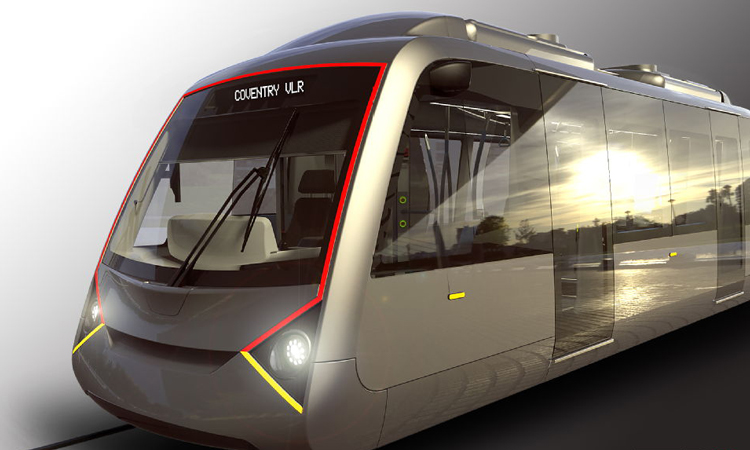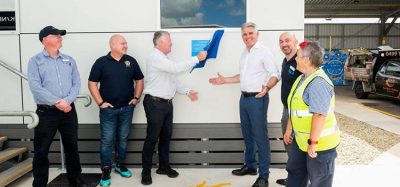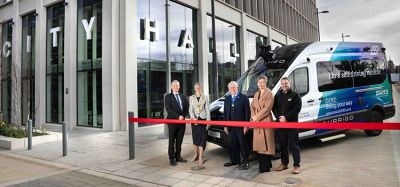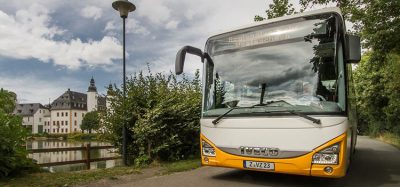Battery-powered, lightweight, rail-based vehicle planned for Coventry
- Like
- Digg
- Del
- Tumblr
- VKontakte
- Buffer
- Love This
- Odnoklassniki
- Meneame
- Blogger
- Amazon
- Yahoo Mail
- Gmail
- AOL
- Newsvine
- HackerNews
- Evernote
- MySpace
- Mail.ru
- Viadeo
- Line
- Comments
- Yummly
- SMS
- Viber
- Telegram
- Subscribe
- Skype
- Facebook Messenger
- Kakao
- LiveJournal
- Yammer
- Edgar
- Fintel
- Mix
- Instapaper
- Copy Link
Posted: 14 March 2019 | Intelligent Transport | 1 comment
The vehicle will be electric-powered; generating zero emissions, designed with the view to being autonomous in the future.


Engineers and researchers at WMG, University of Warwick, are working alongside Transport Design International (TDI), based in Stratford, to develop a battery-powered, lightweight, rail-based vehicle to operate in Coventry.
The WMG team, including engineers Darren Hughes and Andrew McGordon, are assisting TDI with the design of the vehicle for Coventry City Council, and now have a 3D simulation of the vehicle.
The vehicle will be battery-powered with the long-term objective to become an autonomous vehicle, allowing more vehicles to operate intelligently and efficiently to meet passenger demand.
It will hold 50 passengers, and is hoped to – in the future – work like the London Underground system where there is no timetable and people can hop on and off.
Due to being battery-powered there will be no overhead power supply which is both costly and has a negative impact to the city-scape. This feature provides future flexibility for operating on other non-electrified routes.
The first-of-a-kind design is available to view in 3D via WMG’s visualisation suite and the first test vehicle will be manufactured by mid-2020. TDI have partnered with Coventry-based company RDM who will manufacture the vehicle once the design is complete.
A team of experts are also working to develop a new track system.
Dr Darren Hughes, WMG, University of Warwick, said: “The Coventry light-rail system will be innovative in bringing together technologies from a number of sectors to deliver a low-cost environmentally-sustainable public transport solution for the city of Coventry. Seeing the 3D simulation and envisaging how it will look within Coventry makes us look forward to building the first vehicle that will be ready for testing at a test track facility during 2020.”
The government’s Local Growth Fund through the Coventry and Warwickshire Local Enterprise Partnership (CWLEP) has contributed £2.46 million towards phase one of the research and design of the prototype and £12.2 million has been secured from the West Midlands Combined Authority (WMCA) Devolution Deal to undertake the research and development required to prove the very light rail (VLR) concept.
The WMCA has also allocated specialist resource from Transport for West Midlands to provide technical support, advice and guidance to the project team as the scheme develops.
Councillor Jim O’Boyle, Cabinet Member for Jobs and Regeneration, commented: “VLR is a fantastic innovation and has the potential to transform the way people travel. It will be much more affordable to install than traditional trams, take up far less road space, be able to run alongside traffic and our ultimate aim is that it doesn’t require a driver so it can be a frequent service.
“This VLR work, combined with our work on driverless and connected cars, puts us right at the forefront of creating new, ground-breaking solutions for future transport needs. They will be safer and more environmentally friendly.”
Related topics
Air Quality, Alternative Power, Connected & Autonomous Vehicles, Sustainable Urban Transport
Related modes
Light Rail
Related cities
Coventry, United Kingdom
Related organisations
Coventry City Council, Transport Design International (TDI), University of Warwick, Warwick Manufacturing Group (WMG), West Midlands Combined Authority (WMCA)
Related people
Darren Hughes, Jim O’Boyle









The advantages of a battery fuelled tram are hard to find. Is it any better than a battery fuelled bus? As it is restricted to its rails the bus must win that one as it can be driven anywhere. The new tram may not need a driver but then neither will an autonamous bus that can use technology now under development. So can it solve the congestion problems of parked vehicles clogging side roads or traffic jams or the very low average speed that journeys take? As it will be stopping regularly on bus routes it will cause the same problem that a bus does with traffic behind having to stop as well. In addition its rails are likely to cause cyclists the same problem as trams did with their wheels becoming jammed in the slots sending riders over handlebars. So why has the Coventry City Council chosen to investigate this modern version of the tram? Have they been influenced by Labour Party members with links to the railway unions who would be needed to install railway lines and then to operate such a network?
Should they not be thinking of reducing the use of cars that have brought the City’s reputation down by the excessive pollution they produce? The only answer they have to that is to close roads that just sends the problem elsewhere.
I have been studying alternative methods of transport for some years and the best urban system available in Britain today is the BeemCar. This is a network of overhead tracks that can be installed at roadsides, replacing lamp standards with off-line stations replacing bus stops but within reach of every citizen, not just on main roads. Passengers can chose their destinations and travel there without stopping at average speeds approaching 40mph in four seat carriages with space for luggage and wheelchairs. Opportunities for employment exist in the manufacture, installation, running and maintenance of the network and Coventry City Centre could have the most modern public transport system in the country up and running in time for when the whole world watches it become The City of Culture in 2021. Full details can be found on the website http://www.beemcar.com.